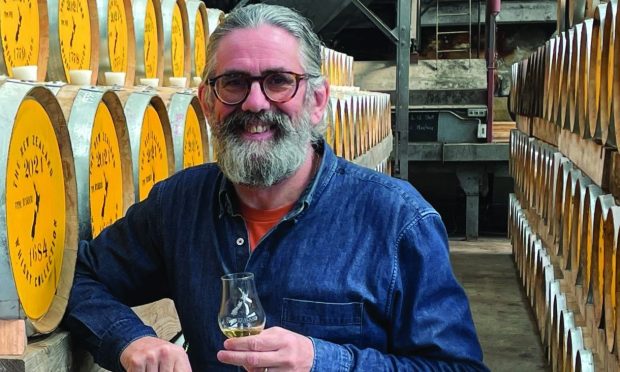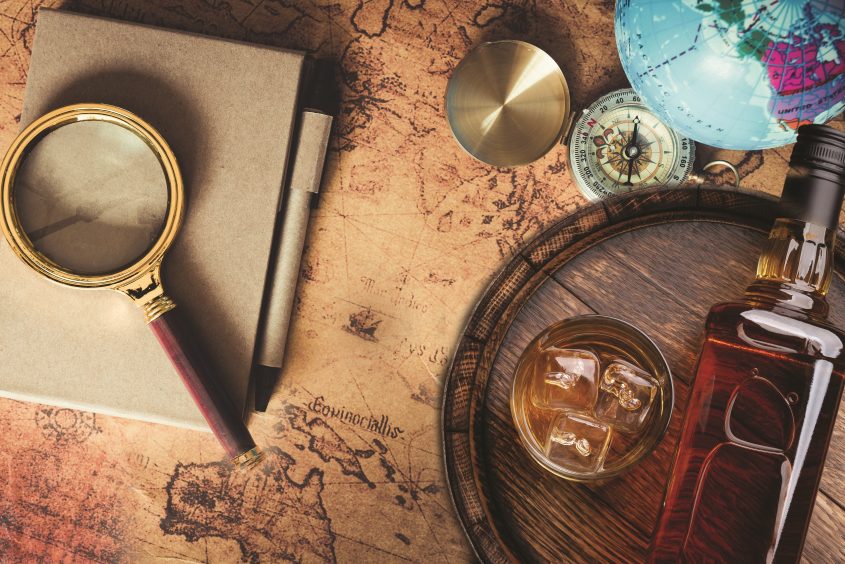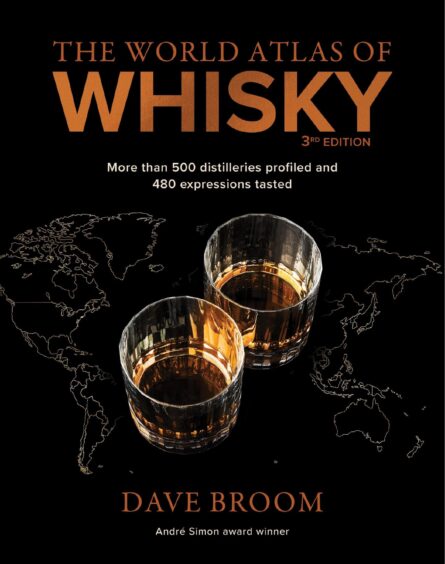
With new whisky distilleries popping up constantly and more countries than ever making the spirit, there’s hardly been a greater time for dram lovers.
Guiding them along has been The World Atlas Of Whisky, labelled one of the best whisky books ever, which has been a go-to to chart the ever-adapting landscape that is as fluid as the drink itself.
So much has changed in the decade since the last edition was published that the latest version is virtually a rewrite, bringing in a plethora of new Scottish distilleries as well as whisky-makers from five different continents.
“The whole landscape has shifted in a way that was unimaginable,” author Dave Broom said. “More countries, more distilleries in established countries by a significant number, more styles and ideas of how to make whisky.
“All these new countries will say, specifically about single malt, that they’re not trying to make Scotch. They want to make a whisky that’s unique or reflects where they’re from, and they have various different approaches.
“They’re acquiring information and techniques from around the world, but really getting something that reflects where they are, using local ingredients, local smoking techniques. That I think is a pretty significant shift.”
Whisky worldwide
The third edition of The World Atlas of Whisky contains significantly expanded sections on the USA, Canada, Ireland, Japan, Australia and France, as well as new entries on China, south-east Asia, Mexico and New Zealand.
It looks at how many distilleries are going back to agricultural production roots, and also the increased momentum of women working in the industry at all levels.
It’s not just a directory of places around the world making whisky; it’s a deep dive into the stories behind the spirits, the human tales in each drop.

Dave explains: “It’s how they’re tackling the big question of ‘what is whisky? as more and more distillers and countries come aboard. What can they make, how do they approach it?
“The only way you get those answers is understanding the thinking of people who are making it. Meeting and interviewing them was just so enlightening and exciting.”
Closer to home in Scotland, the proliferation of whisky around the world seems to be pushing positive change.
“The arrival of what used to be called world whisky has been a real stimulus to Scotch,” Dave said. “A lot of the new distillers in Scotland are looking to Japan for some of the approaches.
“It was fascinating to map the mindsets and see how many distillers around the world were essentially saying a very similar thing having not necessarily ever talked to each other. You get this kind of global movement, and individual interpretations of the whisky.
“Scotch had global domination for 100 years, and therefore was making whisky in a way that would satisfy a global consumer. Now you’ve got every other country in the world piling in.
“It’s made Scotch whisky think about how they make what they’ve always made more interesting, with more depth, resonance and reference to where it’s from rather than just thinking of Scotch as a global brand. I think there’s real positives that have come out of it.”
A place in the community
Away from product innovation, distilleries finding their place in their communities is something Dave finds exciting to explore.
“It’s a different way of thinking about what a distillery is. Hebridean distilleries like Raasay, Harris or Ardnamurchan are built as centres of communities, giving local people careers rather than just jobs, allowing families to stay and grow, and then bringing in tourism.
“This real grassroots understanding of what a distillery can be, especially in under-resourced rural communities, is really important.”
There’s also a trend, he says, in distillers being more willing to hit the pause button rather than feeling forced to churn out bottle after bottle, bringing about a focus on flavour rather than cost.
“A lot of Scotch whisky, partly because it was the only player in the blocks, was driven by efficiency, producing as much alcohol as you could from one ton of barley.
“It’s a really cost efficient way of making whisky and the spirit is good but it loses depth, weight and a bit of resonance.
“A lot of these new distillers can pause and think about how whisky was made in the 1920s and what we’ve lost along the way as we’ve moved towards this hyper-efficient way of making it.
“That means looking at older barley varieties which gave flavour but not much yield, different yeast which would give good flavour, but might not be as efficient creating alcohol.
“Whisky is a business and I understand many facilities have to operate that way. Diageo has to make 20 million cases of Johnnie Walker a year.
“But what’s exciting about whisky at the moment is that there’s not just this one track, there’s all these opportunities to be really interesting, flavoursome whiskies, drawing from that incredible resource that we have in Scotland of hundreds of years of production.
“Cherry picking elements within that help make today and tomorrow’s whisky have that extra depth of character.”
Dave still can’t believe his luck in making researching and writing about the world of whisky his job.
“I was lucky I was in the right place at the right time back when I began specialising in it,” he said. “My job really is to ask people who know huge amounts about whisky questions, pass on information. I’m a conduit. I don’t make whisky, I just pass stuff on.
“Meeting the people that actually make whisky really brings home how real it is. It’s easy to see whisky as just being this bottle on the shelf, anonymously made somewhere in a quasi-industrial process and not understand the human touch. People are the most significant thing.”
Around the globe
The book profiles over 500 distilleries across five continents. Dave picked out a number of areas that he’d found particularly interesting in his extensive research.
“I’m really excited about what is about to burst into life in Ireland,” he said. “When I started writing about whisky in the 80s, there were two distilleries in Ireland both owned by the same company. Now there are 50, and most of them are now looking at single pot still, the gold standard whisky of the 19th century and what made Irish whisky amazing, and re-examining that.
“In the next 5 to 10 years, amazing stuff is going to come out of Ireland.
“I’m really excited about Nordics as well. It’s fair to bundle them all together, although there’s difference between them but the Nordic mindset is a fascinating one that’s quite related to food culture and also design. The whiskies are really amazing.
“I’m also excited about New Zealand, which was relatively late on to the scene.
“American single malt is now just beginning to emerge, and that in itself is going to be a fascinating category.
“America is a big country and the difference climate-wise between Texas and Washington state will help to produce different styles.”
The World Atlas Of Whisky, 3rd edition, is available now from Octopus Books

Enjoy the convenience of having The Sunday Post delivered as a digital ePaper straight to your smartphone, tablet or computer.
Subscribe for only £5.49 a month and enjoy all the benefits of the printed paper as a digital replica.
Subscribe © Supplied
© Supplied